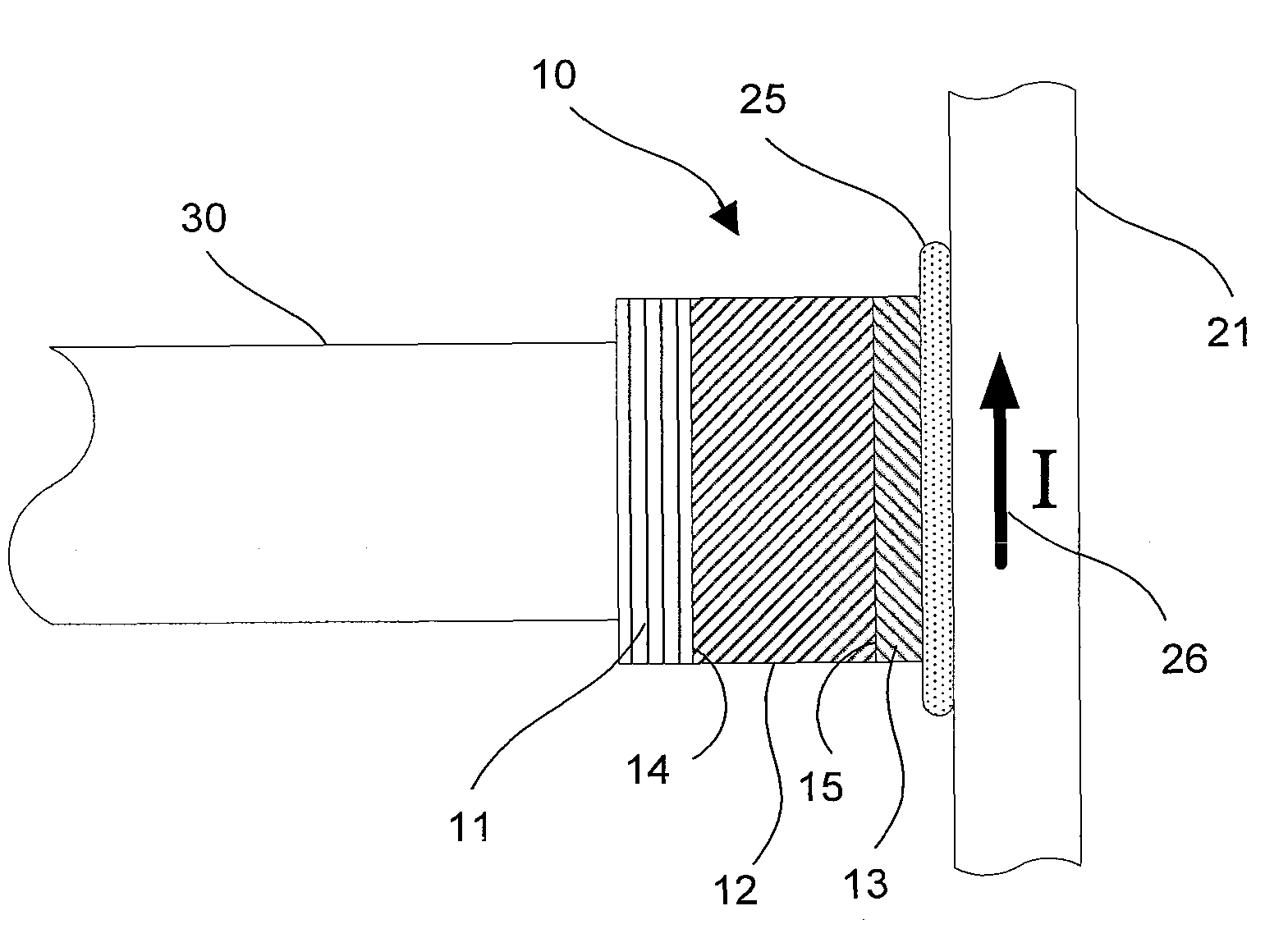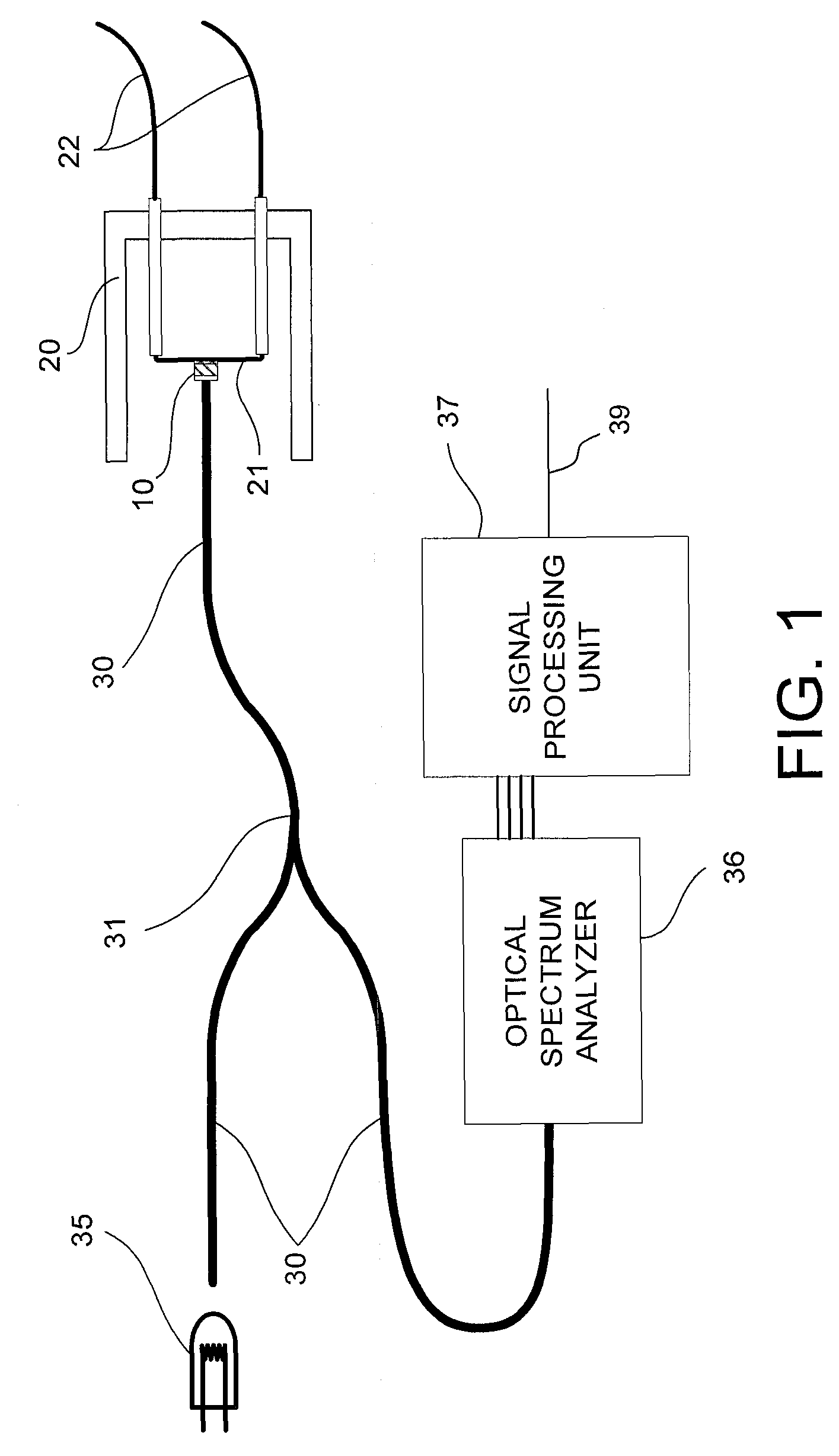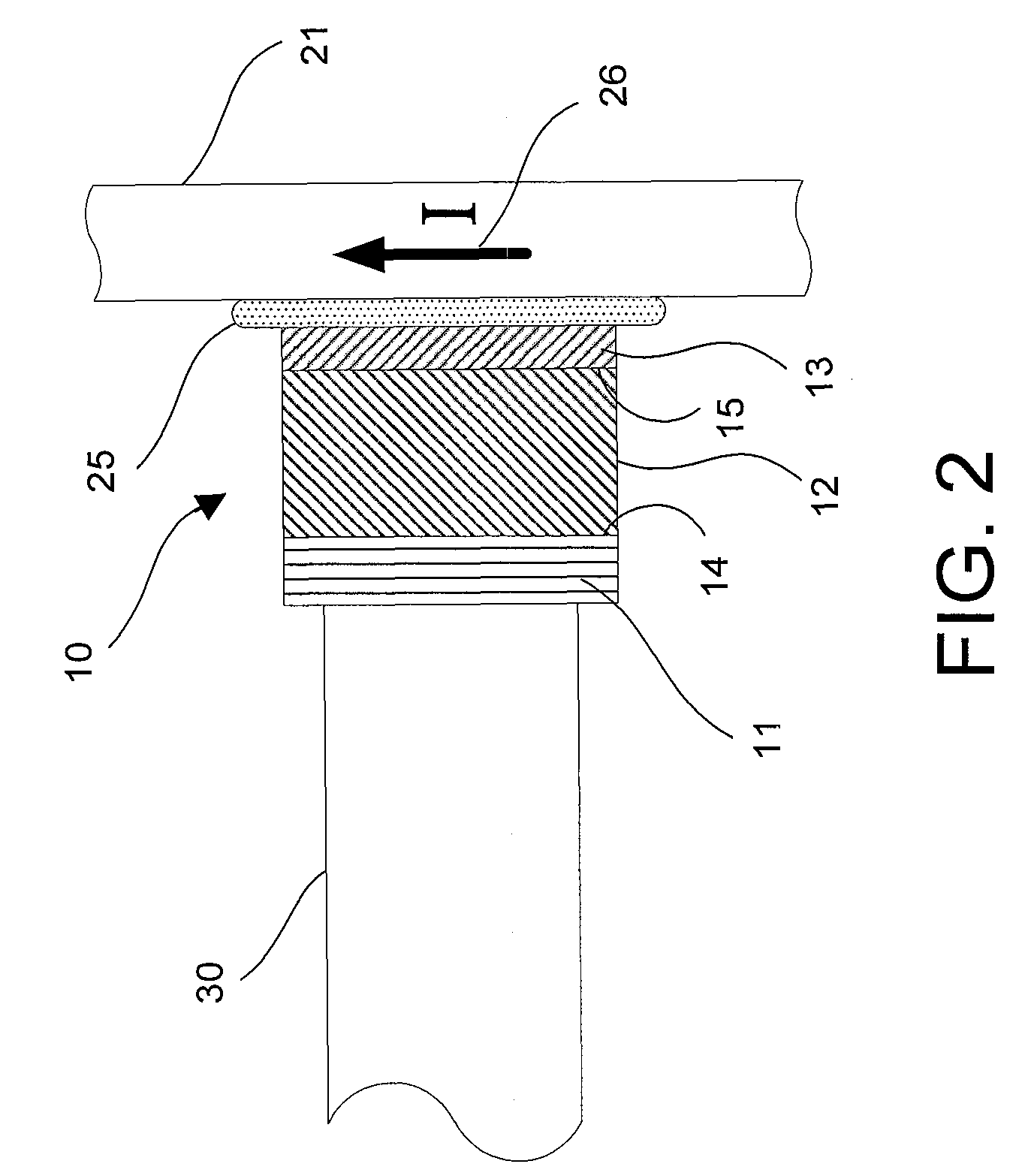Optical sensor for monitoring electrical current or power
a technology of optical sensors and current or power, applied in the direction of photometry, electric vehicles,spectrum investigation, etc., can solve the problems of inability to provide correct measurements, inability to use types of sensors in presence of strong electromagnetic fields or high voltage environments, and inability to adapt to the type of sensors
- Summary
- Abstract
- Description
- Claims
- Application Information
AI Technical Summary
Benefits of technology
Problems solved by technology
Method used
Image
Examples
Embodiment Construction
[0024]Referring to FIGS. 1, 2 and 3, a simple optical sensor for monitoring electrical current and power uses a temperature sensitive element 12 (forming part of the optical sensor 10 of FIG. 1) which has a characteristic in its optical absorption spectrum which varies with temperature. More specifically, the temperature sensitive element 12 is made of a semiconductor material having a transition, e.g. an edge, the spectral position of the optical absorption edge varying with temperature. The optical sensor 10 is put in thermal contact with the element 21 of the device 20 to be monitored. In an example, the monitored element 21 shown in FIG. 1 is a bridge-wire of an electro-explosive device 20. Current flowing through (or power dissipated by) the bridge-wire 21 of the monitored electro-explosive device 20 is monitored by measuring the spectral shift 41 of the semiconductor absorption edge 40 (see FIG. 3) caused by the temperature increase of the bridge-wire 21 of the monitored elect...
PUM
 Login to View More
Login to View More Abstract
Description
Claims
Application Information
 Login to View More
Login to View More - R&D
- Intellectual Property
- Life Sciences
- Materials
- Tech Scout
- Unparalleled Data Quality
- Higher Quality Content
- 60% Fewer Hallucinations
Browse by: Latest US Patents, China's latest patents, Technical Efficacy Thesaurus, Application Domain, Technology Topic, Popular Technical Reports.
© 2025 PatSnap. All rights reserved.Legal|Privacy policy|Modern Slavery Act Transparency Statement|Sitemap|About US| Contact US: help@patsnap.com



